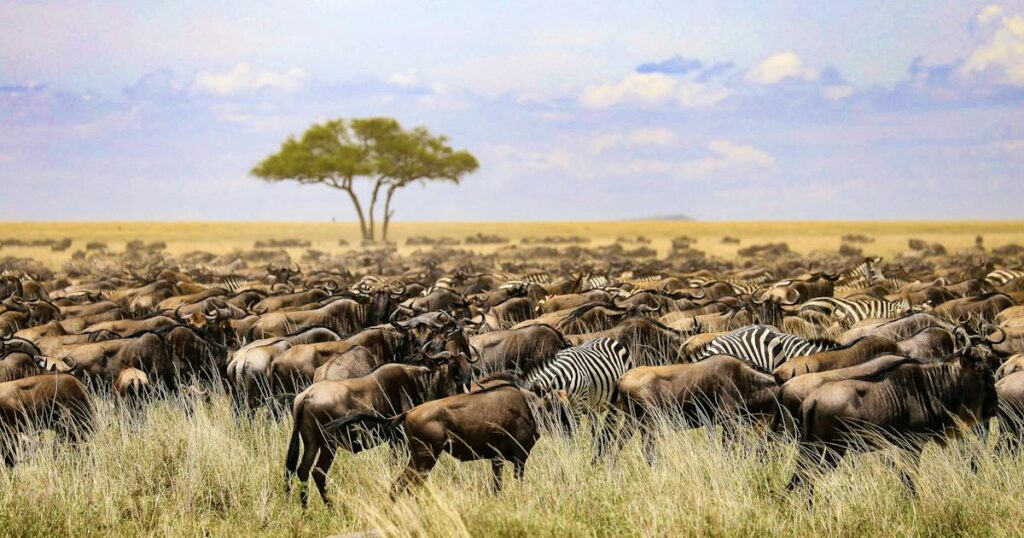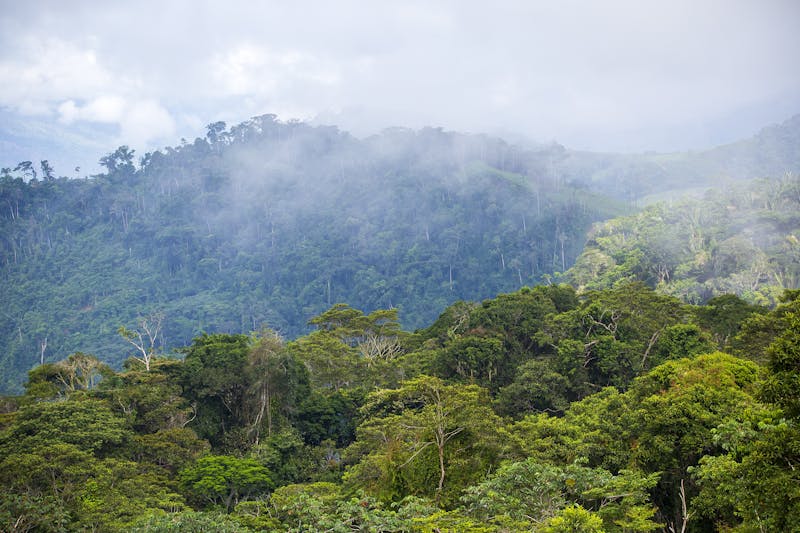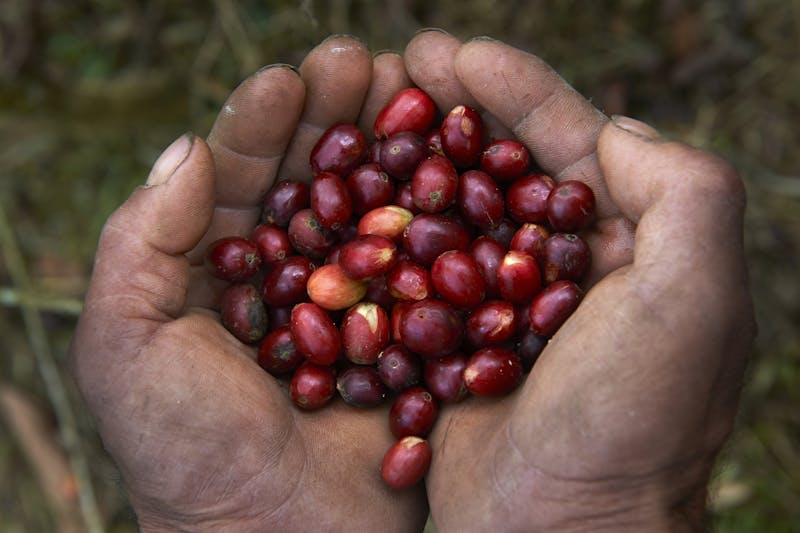Partnerships and communities drive nature conservation
4 min read
Nature is in crisis: More than 1 million animal and plant species are at risk of extinction. And critical ecosystems — like forests that absorb carbon or coral reefs that protect coastlines — are being destroyed. Yet in the face of these challenges, communities, governments and businesses are partnering on innovative efforts to protect the nature we all rely on.
In the final weeks of the year, Conservation News is reflecting on some of our most noteworthy stories about how nature and human well-being are intertwined — and what it takes to protect them. From local conservation efforts that are having a dramatic impact on the Amazon, to the discovery of a species once thought lost, here are some highlights.
Can tree farms save a forest? Brazil is about to find out
Degraded pastureland is being transformed into eucalyptus tree farms (above) and restored natural forest. © FLAVIO FORNER
In Brazil’s Mato Grosso do Sul, an unlikely partnership is behind a bold effort to restore thousands of acres of degraded forest — an area roughly twice the size of Manhattan. If it succeeds, “Project Alpha” could blaze a trail for a new kind of sustainable — and self-sustaining — protection for nature. Conservation International scientist Will Turner and Americas lead Rachel Biderman share the project’s ambitions, and how it has brought together two groups often seen as natural adversaries: conservationists and timber operators.
Read more here.
Meet the South African startup putting cattle to work for conservation
 Sotho horsemen in Eastern Cape, South Africa practice traditional livestock grazing techniques. © TROND LARSEN
Sotho horsemen in Eastern Cape, South Africa practice traditional livestock grazing techniques. © TROND LARSEN
Around the world, modern farming practices have led to the degradation of nature. To help change that, Conservation International invested in a South African start-up that is promoting traditional grazing practices that work with nature’s rhythms, rather than against them. Conservation News sat down with the CEO of Meat Naturally and Mellony Spark, who leads CI Ventures in Africa, to discuss building a future where animal husbandry and conservation work hand-in-hand.
Read more here.
When COVID halted wildlife tourism in Kenya, one area weathered the storm
 Tourists travel to the MAASAI MARA NATIONAL RESERVE in Kenya to see wildlife. © JONATHAN IRISH
Tourists travel to the MAASAI MARA NATIONAL RESERVE in Kenya to see wildlife. © JONATHAN IRISH
Every year, thousands of wildebeest embark on a “great migration,” following seasonal rains from the Serengeti to Kenya’s Maasai Mara region. It’s the largest movement of animals on Earth — drawing droves of tourists who generate income and wages for local communities. But when the COVID crisis tanked tourism, communities needed financial support to make up for lost revenues. Conservation International partnered with the Maasai Mara Wildlife Conservancies Association and others to launch a financial rescue package for approximately 100,000 people in the region who rely on tourism income.
Read more here.
In Amazon, small towns are a force of nature
 Teoponte, Bolivia, where the community worked together to protect more than a third of its territory. © GABRIELA VILLANUEVA
Teoponte, Bolivia, where the community worked together to protect more than a third of its territory. © GABRIELA VILLANUEVA
There’s no mistaking how most protected areas come about — it’s literally in the name: “National” parks. “National” reserves. “National” marine sanctuaries. Yet in Bolivia, a different approach has taken root: Municipalities and Indigenous communities have been taking the unprecedented step of setting aside their own lands under their own authority. With support from Conservation International, they have collectively protected an area roughly the size of Cuba.
“Little by little, Bolivia’s municipalities and Indigenous communities — some as small as 200 people — are having a big impact on the Amazon,” said Eduardo Forno, who leads Conservation International-Bolivia.
Read more here.
A Peruvian forest was vanishing. Coffee and community trust saved it
 THE ALTO MAYO COFFEE COOPERATIVE HAS EXPORTED OVER 1,500 TONS OF SUSTAINABLE COFFEE. ©THOMAS MULLER
THE ALTO MAYO COFFEE COOPERATIVE HAS EXPORTED OVER 1,500 TONS OF SUSTAINABLE COFFEE. ©THOMAS MULLER
The Alto Mayo Protected Forest is the most populated protected area in Peru — and, perhaps unsurprisingly, one of the most heavily deforested. For decades, inhabitants practiced slash-and-burn agriculture, cutting and burning large swaths of trees to clear the way for small coffee plantations. To end this destructive cycle, Conservation International partnered with local communities to secure sustainable livelihoods through access to specialty-grade coffee markets. The result? A dramatic decline in deforestation.
Read more here.
In an undisturbed cave, expedition finds ‘microbats’ once thought lost
Weighing about as much as a quarter, Pacific sheath-tailed bats were once found roosting in the overhanging cliffs and limestone caves across a string of Pacific islands. After gradually disappearing from one island after another, the bats appeared to be hurtling towards extinction. Then an expedition led by Conservation International made a remarkable discovery.
Read more here.
Mary Kate McCoy is a staff writer at Conservation International. Want to read more stories like this? Sign up for email updates. Also, please consider supporting our critical work.





